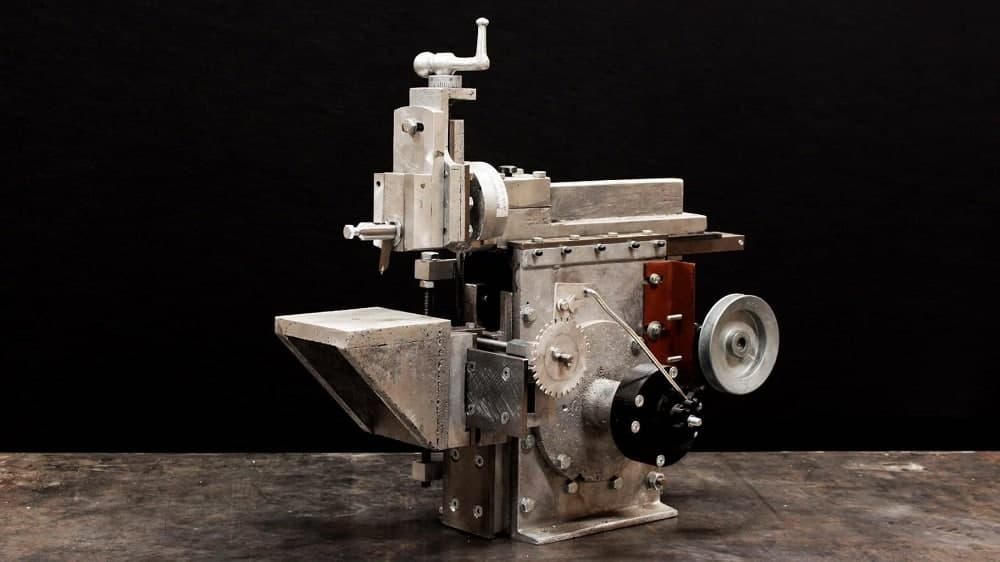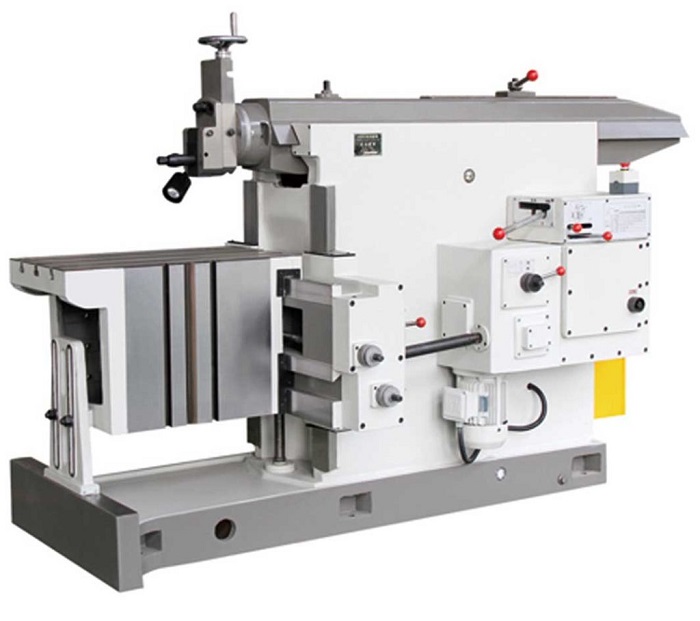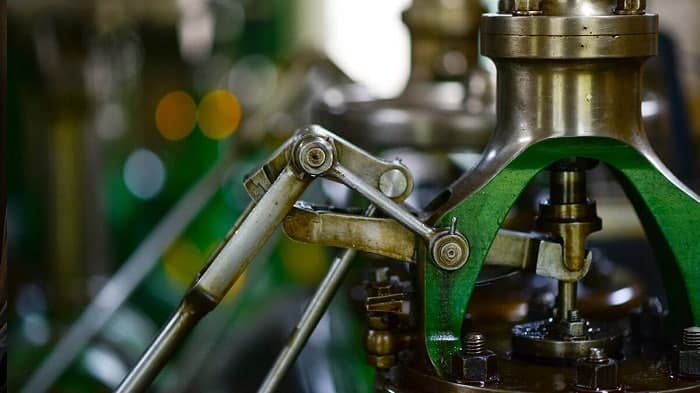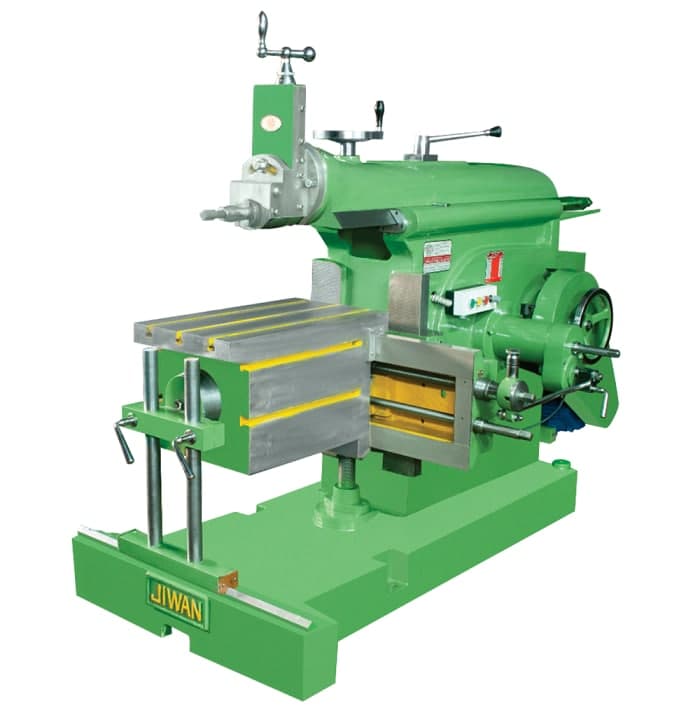Welcome to Linquip Blog. We have prepared another descriptive article about another engineering Machine. Today we are going to discuss all the details about the shaper machine. Therefore, first we need to have a definition of what this kind of Machine is and what it does. In the next step, we will dig into different components it has and elaborates on each part’s role in the machine. Then, we will consider working principle and how it works and in the rest of the sections, respectively, information such as the different types, advantages, disadvantages, and applications of Shaper Machine will be delivered. So, let us get started.
What Is a Shaper Machine?
A shaper machine is one of the most common machine tools that is found in mechanical workshops and industries. It always plays a very crucial role in manufacturing parts, different jobs, etc. Shaper machines are machines for producing horizontal, vertical, or inclined planes, while a new generation of shaper machines can also produce contoured surfaces that can be bent or tilted over the material.
it is indeed one of the types of machine tool which uses the relative motion between the workpiece and the cutting tool. As you may not know what a machine tool is, we have to say that a machine tool is a device for shaping the metal part or any other kind of rigid material. Like a wood shaper, A shaper machine is a device through which we can obtain the required shape as well as the size of the material.
With the help of the linear motion that a shaper does, this device cuts in a linear toolpath. Its cut is quite similar to the lathe machine with the difference that a lathe machine gives us a helical cut while the shaper gives us the required linear cut.
What Parts Is a Shaper Machine Made of?
A shaper machine has 6 main components that we have listed below. Each of these parts has a unique role in a shaper and the cooperation between them, the shaper works as it is expected.
-
Base
The base of the machine is the main body of the machine and serves as the backbone for the other parts. The base of the machine is designed to carry the weight of the machine and is bolted. It is made of cast iron and can withstand the vibration and load of the machine.
-
Column
The Column of a shaper machine is a cast-like casting that is cast from iron and mounted on a pedestal. It is equipped with precision guide rails on which the ram moves back and forth.
-
The cross-rail
The beam is mounted on the column, allowing the movement of the table to move laterally. The table can be raised or lowered by rotating the lifting screws to suit different sizes of work.
-
Workbench Table
The table is fixed to the saddle by bolts and receives lateral or vertical movement from the saddle rail. The table can be rotated at any angle to meet the working requirements. The main work of the table is to fix the workpiece.
-
Ram
The tool moves back and forth on the guide rail and carries the tool head with a single-point cutting tool. The working punch performs the cutting motion in the forward direction, while the reverse direction drives the tool head to quickly slide back and repeats the round trip to perform the same work again.
-
Tool Head
The tool head is equipped with a cutting tool that can feed the screw handle downwards to allow the cutting tool to perform a cutting motion.
What Is the Working Principle of the Shaper Machine?
Before we start to discuss the working principle of the shaper machine, we need to talk about the cutting tool. The function of the cutting tool is to remove the material from a workpiece. There is a single-point cutting tool used in the shaper with only one cutting edge. The turning tool is the best example of a single-point cutting tool. It is placed in the tool holder and also mounted on the ram.
The workpiece is clamped directly on the table for machining and it may support at another end. Ram is exhibiting the reciprocating motion. And the cutting tool holder is moved backward and forward on the surface of the workpiece. The cutting takes place in forwarding stroke in a standard shaper machine and the backward stroke is considered to be idle. The cutting tool got motion from the quick return mechanism and cutting depth is achieved by movement of the tool.
The shaper machine is in a reciprocating mode. The single-point cutting tool is fixed in the ram and the workpiece is fixed on the work table. The cutting tool is cut back and forth on the working object, and the return stroke is cut by no metal. It is called an empty trip.
How Does a Shaper Machine Work?
The workpiece is mounted on the table and the table is rigid and box-shaped and placed in front of a machine or near the machine. The height of the table is easily adjustable and it is adjusted to match the workpiece. The motion of the table is control manually. The table is equipped with an automatic feed mechanism and works with a feed screw. This is for cutting and the ram is adjustable for stroke.
What Are the Types of Shaper Machine?
The shaper machine has different types which are classified according to the table design, ram travel, types of the driving mechanism, and cutting stroke. Below, we will talk about all the types of shapers categorized into 4 classes as we mentioned before.
-
Based on Table Design
1.1. Universal Shaper Machine: The table moves in the inclined direction and also horizontal and vertical. And the shaper machine can swivel with its axis. This is known as the universal shaper machine as it is used for universal applications.
1.2. Standard Shaper Machine: There are only two components in standard shaper machines are horizontal and vertical and these directions are used for giving the feed.
-
Based on Ram Travel
2.1. Vertical Shaper: The ram reciprocates in the vertical direction in the vertical shaper machine. Now if you want to cut the internal surface then the vertical shaper is perfect. And the workpiece can move in any given direction.
2.2. Horizontal Shaper: There is a reciprocating ram in the horizontal shaper and the ram moves in the horizontal direction. It is widely used for the generation of flat surfaces and other applications.
-
Based on the Driving Mechanism
3.1. Hydraulic Shaper: As the name suggests for the machining a hydraulic mechanism is required. The high-pressure oil is used in the machine. The high-pressure oil works on both sides of the piston which causes the reciprocating of the machine. This reciprocating motion moves the ram. The main benefit of this machine is that we can maintain the constant cutting speed.
3.2. Crank Type Shaper: The crank type shaper machine is a widely used shaper machine that executes reciprocating machining.
3.3. Gear Type Shaper: This gear type machine, ram is reciprocating in a machine. Its transverse speed of the machine depends on several gears.
-
Based on Cutting Stroke
4.1. Draw Cut Type: The metal is removed in the backward position of the ram in the draw cut type machine.
4.2. Push Cut Type: The metal is removed in the forward position of the ram in the push cut shaper machine and it is a widely used shaper machine.
What Are the Advantages and Disadvantages?
-
Advantages:
Here are some of the preponderances of a shaper machine that you have to notice:
- This is used for machining straight and flat surfaces.
- For gear teeth and other internal splines.
- For the blind holes, the gear tooth cutting can be done.
- Used for dovetail sliders.
- This is a perfect device to get the smoothness of a rough surface.
- It is also used for electric discharge machining.
- In the irregular shape holes with tight corners cannot be made with milling or with other machining processes. The machine can create these types of holes.
-
Disadvantages:
Three main defects of every shaper are listed below:
- Shaper machines take more time for machining. There are cutting and return strokes in the machining, so it takes a longer time for machining than the milling and other machines.
- There is only one tool that is used for cutting. Actually, you cannot cut the workpiece in both directions.
- The cutting speed of shapers is low.
What Is a Shaper Machine Used for?
There are some applications listed below for a shaper
- A shaper is used for machining straight and flat surfaces.
- It is also used for gear teeth and other internal splines.
- The gear tooth cutting can be done for the blind holes
- It can be used for dovetail sliders.
- A shaper is a perfect device to get the smoothness of a rough surface.
- It is also used for electric discharge machining.
- If you need to have irregular shape holes with tight corners that cannot be made with milling or with other machining processes, a shaper can be a great help.
Conclusion
In this article, we tried to give you all the essential information about the shaper machine. we brought the basic definitions and then we moved to the parts and components descriptions. In the 3rd section, we delved into the working principle that the shaper is based upon. The remaining sections were related to the different types of shapers, advantages, disadvantages, and also applications of this machine tool. All we did in this article was an attempt to make it easier for you to understand how a shaper works.
If you have any experience of using different types of shapers and know more about them, we will be very glad to have your opinions in the comments on our website Linquip. Moreover, if you have any questions about this topic, you can sign up on our website and wait for our experts to answer your questions. Hope you enjoyed reading this article.
Buy Equipment or Ask for a Service
By using Linquip RFQ Service, you can expect to receive quotations from various suppliers across multiple industries and regions.
Click Here to Request a Quotation From Suppliers and Service Providers
- The 10 Best Wire Crimping Tools in 2023 + Buying Guide
- The 12 Best RJ45 Crimpers in 2023 + Buying Guide
- The 10 Best Brush Cutters in 2022 + Buying Guide
- Top 11 Machine Shops in Phoenix, AZ in 2022
- Top 15 Machine Shops in San Diego (CA) in 2022
- Top 15 Machine Shops in Houston, TX in 2022
- Top 15 Machine Shops in New Hampshire (NH) in 2022
- Top 15 Machine Shops in Georgia (GA) in 2022
- Top 15 Machine Shops in Denver in 2022
- Top 14 Machine Shops in Wisconsin in 2022
- The 10 Best 3D Printers for Under $500 in 2022
- Top 10 Indiana Machine Shops in 2022
- Top 11 Machine Shops in Dayton, OH in 2022
- Top 10 Machine Shops in San Antonio in 2022
- Top 15 Machine Shops in Seattle in 2022: The Best Ones
- Top 10 Machine Shops in New Jersey in 2022: The Best Ones






